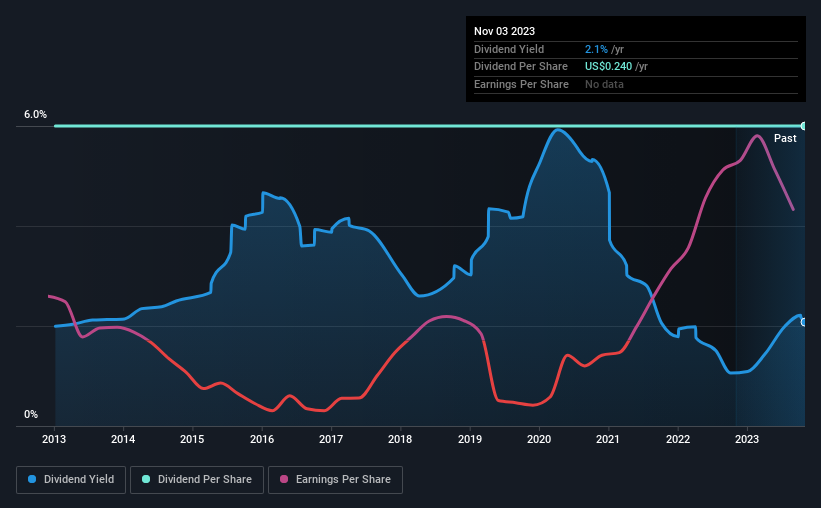Richardson Electronics, Ltd. (NASDAQ:RELL) Will Pay A US$0.06 Dividend In Four Days
Readers hoping to buy Richardson Electronics, Ltd. (NASDAQ:RELL) for its dividend will need to make their move shortly, as the stock is about to trade ex-dividend. The ex-dividend date is one business day before a company's record date, which is the date on which the company determines which shareholders are entitled to receive a dividend. The ex-dividend date is important as the process of settlement involves two full business days. So if you miss that date, you would not show up on the company's books on the record date. In other words, investors can purchase Richardson Electronics' shares before the 9th of November in order to be eligible for the dividend, which will be paid on the 29th of November.
The company's upcoming dividend is US$0.06 a share, following on from the last 12 months, when the company distributed a total of US$0.24 per share to shareholders. Looking at the last 12 months of distributions, Richardson Electronics has a trailing yield of approximately 2.1% on its current stock price of $11.55. We love seeing companies pay a dividend, but it's also important to be sure that laying the golden eggs isn't going to kill our golden goose! We need to see whether the dividend is covered by earnings and if it's growing.
See our latest analysis for Richardson Electronics
Dividends are usually paid out of company profits, so if a company pays out more than it earned then its dividend is usually at greater risk of being cut. Richardson Electronics is paying out just 20% of its profit after tax, which is comfortably low and leaves plenty of breathing room in the case of adverse events. A useful secondary check can be to evaluate whether Richardson Electronics generated enough free cash flow to afford its dividend.
Click here to see how much of its profit Richardson Electronics paid out over the last 12 months.
Have Earnings And Dividends Been Growing?
Stocks in companies that generate sustainable earnings growth often make the best dividend prospects, as it is easier to lift the dividend when earnings are rising. If earnings decline and the company is forced to cut its dividend, investors could watch the value of their investment go up in smoke. That's why it's comforting to see Richardson Electronics's earnings have been skyrocketing, up 46% per annum for the past five years.
The main way most investors will assess a company's dividend prospects is by checking the historical rate of dividend growth. Richardson Electronics's dividend payments are effectively flat on where they were 10 years ago.
The Bottom Line
Is Richardson Electronics an attractive dividend stock, or better left on the shelf? We like that Richardson Electronics has been successfully growing its earnings per share at a nice rate and reinvesting most of its profits in the business. However, we note the high cashflow payout ratio with some concern. Overall, it's hard to get excited about Richardson Electronics from a dividend perspective.
In light of that, while Richardson Electronics has an appealing dividend, it's worth knowing the risks involved with this stock. Every company has risks, and we've spotted 4 warning signs for Richardson Electronics (of which 1 makes us a bit uncomfortable!) you should know about.
A common investing mistake is buying the first interesting stock you see. Here you can find a full list of high-yield dividend stocks.
Have feedback on this article? Concerned about the content? Get in touch with us directly. Alternatively, email editorial-team (at) simplywallst.com.
This article by Simply Wall St is general in nature. We provide commentary based on historical data and analyst forecasts only using an unbiased methodology and our articles are not intended to be financial advice. It does not constitute a recommendation to buy or sell any stock, and does not take account of your objectives, or your financial situation. We aim to bring you long-term focused analysis driven by fundamental data. Note that our analysis may not factor in the latest price-sensitive company announcements or qualitative material. Simply Wall St has no position in any stocks mentioned.

